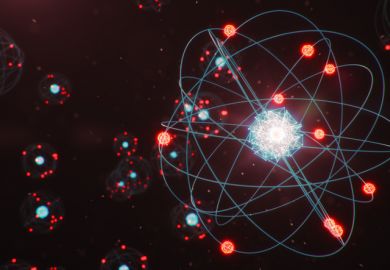Three materials scientists have been awarded the Nobel Prize in Chemistry for discovering and developing nanoparticles so tiny that they can measure several atoms wide.
Alexei Ekimov, Louis Brus and Moungi Bawendi were named as this year’s final science Nobelists “for the discovery and synthesis of quantum dots” – the smallest components of nanotechnology, which are now used to illuminate televisions, computer screens and LED lamps, as well as for medical purposes such as surgery and mapping biological cells.
The US-based scientists were praised for advancing research in nanoparticles, which few people believed could be put to practical use given the tiny scale at which quantum dots would needed to be sculpted.
A quantum dot – often comprising just a few thousand atoms – is roughly the same scale in size to a football as a football is to the size of the Earth, the Nobel panel explained.
In the early 1980s, Professor Ekimov succeeded in creating size-dependent quantum effects in coloured glass at the St Petersburg-based Vavilov State Optical Institute. He moved to the US in the 1990s to become chief scientist at Nanocrystals Technology, a private company in New York. His work helped to establish how the nanoparticle size affected the colour of the glass via quantum effects.
A few years later, Columbia University professor Louis Brus was the first scientist in the world to prove size-dependent quantum effects in particles floating freely in a fluid.
In 1993, Moungi Bawendi – a Paris-born scientist who is now a professor at Massachusetts Institute of Technology – revolutionised the chemical production of quantum dots, resulting in almost perfect particles. This high quality was necessary for them to be used in applications.
“Quantum dots have many fascinating and unusual properties. Importantly, they have different colours depending on their size,” said Johan Åqvist, chair of the Nobel Committee for Chemistry.
Researchers believe quantum dots could eventually help to create to flexible electronics, tiny sensors, thinner solar cells and encrypted quantum communication, explained the Nobel committee, noting that “we have just started exploring the potential of these tiny particles”.
Bawendi’s win is the third Nobel for France this year, after Anne L’Huillier and Pierre Agnostini took the prize for physics alongside Hungary’s Ferenc Krausz. Earlier this week another Hungarian-born scientist, Katalin Karikó, won the Nobel Prize for Medicine or Physiology for her research into mRNA technology that has enabled the creation of Covid-19 vaccines.
Register to continue
Why register?
- Registration is free and only takes a moment
- Once registered, you can read 3 articles a month
- Sign up for our newsletter
Subscribe
Or subscribe for unlimited access to:
- Unlimited access to news, views, insights & reviews
- Digital editions
- Digital access to THE’s university and college rankings analysis
Already registered or a current subscriber? Login








